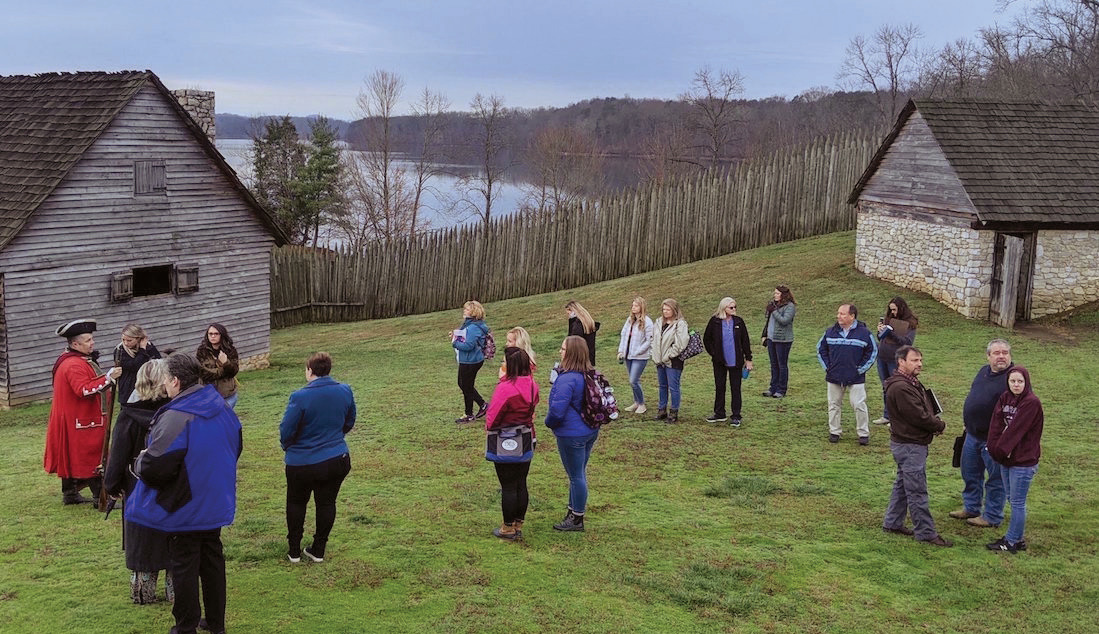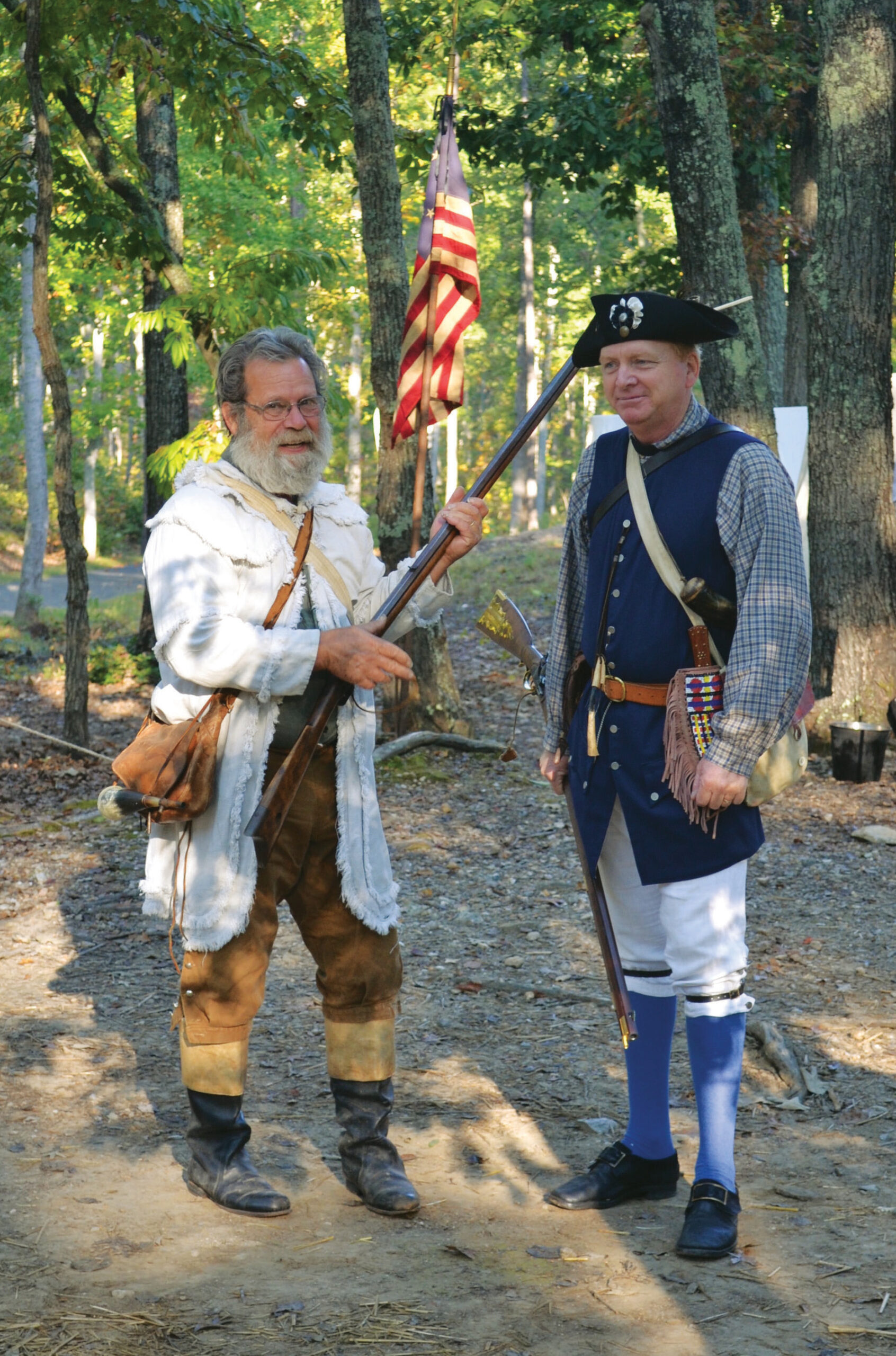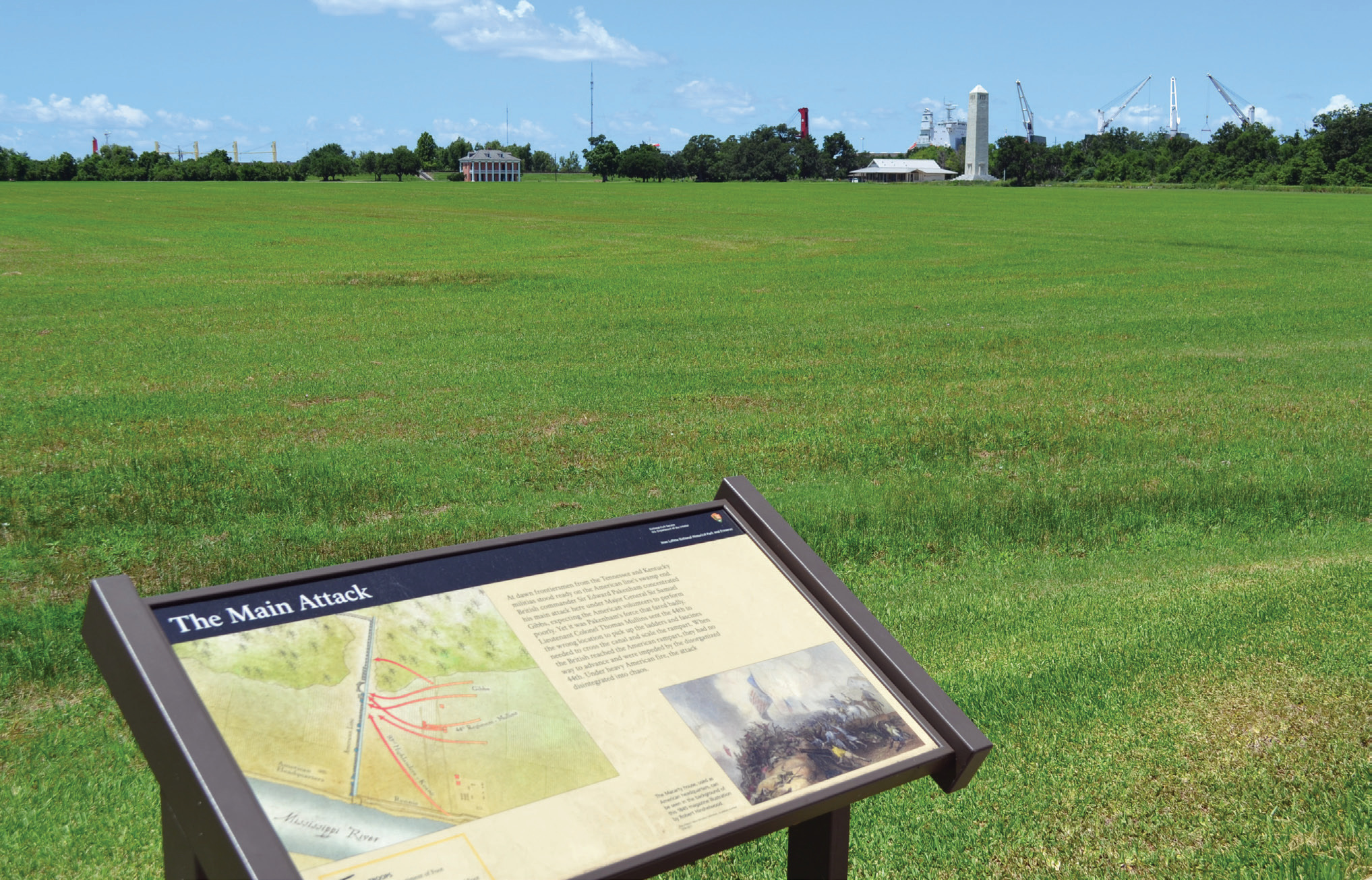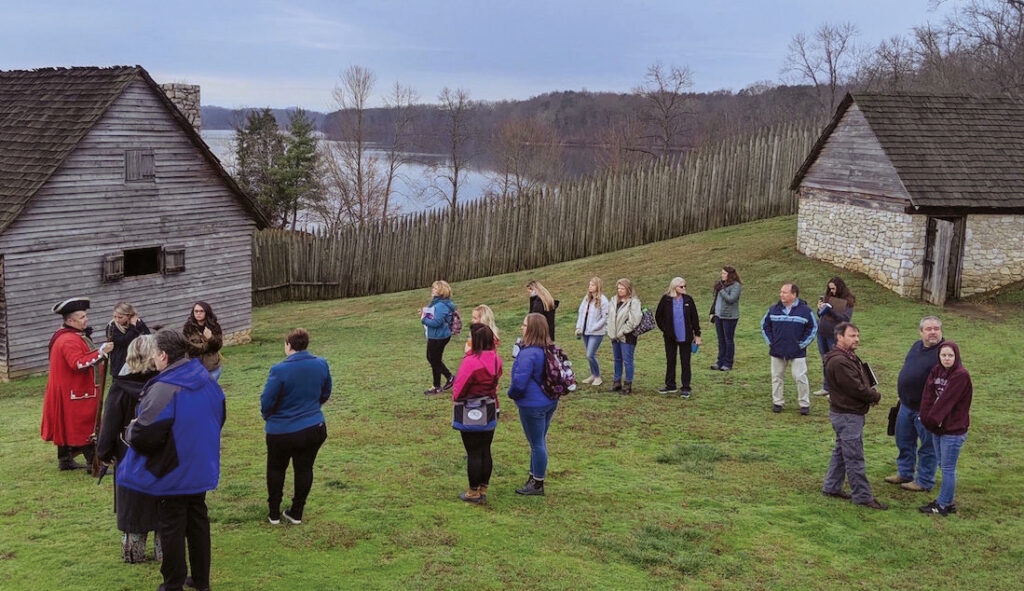Many people love Tennessee history. Tennesseans are proud of David Crockett, they visit Shiloh, they boast that the suffrage amendment became part of the Constitution in their Capitol and they like to learn about Tennessee’s chapters in the Civil Rights Movement. Many take visits to historical attractions such as the Carter House in Franklin and the Cumberland Homesteads in Crossville.
But if you are interested in public education, you might be surprised to learn that the Volunteer State devotes only one semester to Tennessee history, and that semester is in fifth grade. A new proposal would move that semester from fifth to third grade (see page 21 for more).
Comparable states devote far more time and resources to teaching their state histories. Georgia, North Carolina, South Carolina, Texas, Louisiana, West Virginia and Minnesota require a full year of state history in middle school. Arkansas, Mississippi, Kansas and Oklahoma require a semester of state history in middle or high school, but most of these states don’t specify the grade. Florida, Alabama, Indiana, Colorado and Virginia devote a full year of “state studies” in fourth grade, then “embed” state history into U.S. history when it is taught later.

Missouri, Kentucky and Tennessee are outliers.
A few years ago, Missouri moved its state history to a full year in third grade — although the social studies coordinator there says they also bring up Missouri topics when they cover U.S. history in later grades.
Kentucky stopped teaching a required state history course several years ago. According to the standards document found on the state’s website, public schools in the Bluegrass State are supposed to “embed” state history into U.S. history classes (more on what that word means shortly).
How Tennessee ended up with a fifth-grade semester of its history is a bit of a long story.

Before 2002, Tennessee taught two “units” of state history — in fourth and seventh grades. Then the Tennessee Department of Education shifted to “embedding” under which state history would no longer be taught as a separate subject but theoretically woven into U.S. history classes taught in grades four, five, eight and 11. Under embedding, for example, students were supposed to learn about the migration of the Donelson Party in 1779–1780 while they were learning about the Revolutionary War. Students were supposed to learn about Tennessee’s Civil War battles such as Stone’s River and Fort Donelson when they cover the Civil War. (Most national Civil War textbooks downplay the war in Tennessee and focus only on Virginia and Maryland.) Under embedding, Tennessee students were supposed to learn about Civil Rights events in Tennessee such as the Highlander Folk School and the integration of Clinton High School when they learned about the movement elsewhere.

“Embedding” was not successful in Tennessee in part because its implementation was based on the idea that four full grades of social studies teachers needed to be trained to teach Tennessee history (they weren’t). Between 2003 and 2014, the late State Sen. Douglas Henry repeatedly proposed bills that would have required the state to go back to teaching Tennessee history separately. His bills were rejected every time.
In 2017 the General Assembly finally passed a law requiring the state to teach a Tennessee course. Sponsored by Sen. Ferrell Haile and by then-Rep. Art Swann, the law did not specify the length of the course or where it would be placed in the scope and sequence. Haile and Swann wanted their course to be a year in length and in eighth grade. But after their bill became law, the Department of Education carved out a Tennessee history semester in fifth grade.
Here are summaries of what other states do today. In cases where a social studies coordinator is not cited, the information was obtained from the official state department of education website.
North Carolina has a full year of North Carolina studies in fourth grade and another year of state history in eighth grade. The Tar Heel State also has a six-person social studies team (Tennessee no longer has a state social studies coordinator).
Georgia law requires a full year of Georgia history in eighth grade, according to Joy Hatcher, social studies program manager for the Georgia Department of Education. In addition, all of second grade is devoted to basic Georgia content such as geography and products of the state.
Arkansas law requires a semester of Arkansas history in middle or high school. According to social studies coordinator Jeffrey Davidson, most students take it in middle school. “I was a social studies teacher here, and it was my favorite course to teach,” says Davidson. “I used to frame it like an Arkansas history and heritage course — what makes Arkansas unique from other parts of the country and what places we have in Arkansas that are unique to the nation.” Arkansas also requires an Arkansas-related “unit” in every elementary grade.

West Virginia law requires a full year of West Virginia history, geography and civics in eighth grade. “Also, when we do the first half of U.S. history in 10th grade and the second half of 11th grade, we do bring up a lot of West Virginia history there as well — especially during the Civil War because that’s why our state exists,” says Dustin Lambert, social studies coordinator.
Alabama does a full year of “Alabama studies” in fourth grade, according to Blake Busbin of that state’s department of education. Also, when Alabama students learn U.S. history in grades five, six, 10 and 11, teachers are supposed to place special emphasis on specific events in Alabama history. “We put emphasis on things like Horseshoe Bend when we do the War of 1812, the Tuskegee Airmen when students do World War II and Huntsville during the space race,” Busbin says.
South Carolina’s fourth and fifth grade U.S. history class is laced with state history. On top of that, students take a full year of South Carolina history in eighth grade.
Texas requires two years of state history in fourth and seventh grades. Last year, a proposal to shift this long-standing practice to an “embedding” arrangement, under which U.S. and Texas history would be taught simultaneously, was rejected by the Texas board of education. “If we put Texas history together with U.S., Texas gets watered down or ignored,” state board member Will Hickman said, according to the online news source Texas Tribune.

Florida does a full year of its history in fourth grade and embeds Florida history into U.S. history classes that come later. According to John Duebel, director of social studies for the Florida Department of Education, “I used to be a social studies teacher here, and I loved the fourth grade Florida studies classes. That’s the year where a large number of students in this state visit St. Augustine, for example.”
Louisiana requires a full year of its history in eighth grade.
Mississippi requires a semester of its history that some students take in middle school and others in high school, depending on the system and school. Also, the entire fourth grade is devoted to Mississippi geography, culture, arts and a small amount of basic state history.
Oklahoma law requires a semester-long high school-level course in Oklahoma history — a lot of which involves the histories of Native American tribes since so many of them have reservations there.
Kansas law requires a “course” be taken in Kansas history in seventh grade or above, but (like in Tennessee) the word “course” is not defined. According to Nate McAlister of the Kansas Department of Education, however, “90% of the school systems devote at least a semester to Kansas history, with the other part of the year being world geography.”
The sixth-grade social studies year is all state history in Minnesota. “We used to teach it in fifth grade, but we moved it to sixth because we wanted it taught by social studies specialists,” says Brittany Rawson-Haeg of the Minnesota Department of Education, adding that some Minnesota studies are included in fourth grade. “State histories are important because if you aren’t careful, history feels far away. But when has happened in your backyard or your hometown, that makes it seem special and interesting.”
According to the standards posted on their state websites, Virginia, Indiana and Colorado devote a full year of fourth grade to their state histories and, in history classes taught in higher grades, put special emphasis on their states’ connections to U.S. history.
In Maryland, fourth and fifth grades are devoted to a curriculum that is best described as “Maryland history within the framework of U.S. history.” This is appropriate, according to Leah Renzi of the Maryland Department of Education, because “Maryland history and U.S. history are so closely connected. Maryland was an original colony; Washington, D.C., is located here; and huge parts of the Civil War happened here. If you were to try to separate Maryland history, that would be hard to do.” Fourth and fifth grades are the grades where students typically take field trips to places such as Antietam battlefield and the Baltimore & Ohio Railroad Museum.
Up North, many states are in the “local control” category, including Ohio, New York, New Hampshire, Maine and Wisconsin. “We do not have statewide curriculum,” says Kristen McDaniel, social studies consultant for the Wisconsin Department of Instruction. “All decisions about what is taught in what grade are made at the district or local level.”
Tennessee history semester might move to third grade
Tennessee is in the middle of revising its social studies standards, a process that occurs every six or seven years.
A committee of teachers chosen by the Tennessee Board of Education met at length last fall and wrote a rough draft of the future social standards. This draft was released to the public on February 27.
The committee recommended that the semester of Tennessee history that now occurs in fifth grade be moved to third grade. It also recommended that many of the Tennessee-specific topics that now appear in the eighth and 11th grade U.S. history classes — Fort Loudoun, the names of Nathan Bedford Forrest and David Farragut, and the Coal Creek Wars, for instance — be deleted entirely from the mandated curriculum. (However, these topics would still appear in the elective Tennessee history class, which is offered in a minority of public high schools.)
Members of the public were allowed to give feedback on these proposed standards in March. Next, the rough draft of the standards and the public feedback will be forwarded to a 10-member Standards Review Committee, the members of which are being appointed by the governor and two legislative speakers.
The Standards Review Committee can make changes to the proposed rough draft of the standards. After several meetings, they are due to be finished with their work by around September, when their recommendation is forwarded to the Tennessee Board of Education for final approval.
The new standards would go into effect in the 2026–27 school year.



